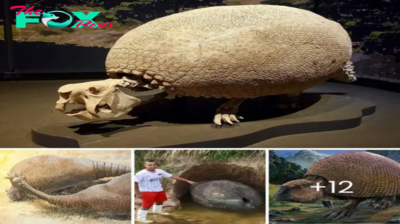Despite its fearsome, Velociraptor-like skull, a 161-million-year-old dinosaur the size of a duck would have been a shining, shimmering and splendid sight to behold — mostly because it sported gleaming, iridescent feathers that were rainbow-colored, a new study finds.

Iridescent feathers glistened on the dinosaur’s head, wings and tail, according to an analysis of the shape and structure of the creature’s melanosomes, the parts of cells that contain pigment.

“The preservation of this dinosaur is incredible — we were really excited when we realized the level of detail we were able to see on the feathers,” study co-researcher Chad Eliason, a postdoctoral researcher at the Field Museum in Chicago, said in a statement.
A farmer in northeastern China’s Hebei Province discovered the fossil, and the Paleontological Museum of Liaoning in China acquired the find in 2014. After discovering its iridescence and noting the unique bony crest on top of the dinosaur’s head, researchers gave it a colorful name — Caihong juji — which is Mandarin for “rainbow with the big crest.”

The scientists discovered the dinosaur’s iridescence and colorful nature by examining its feathers using a scanning electron microscope (SEM). Incredibly, the SEM analysis showed imprints of melanosomes in the fossil. The organic pigment once contained in the melanosomes is long gone, but the structure of the cell parts revealed the feathers’ original colors, the researchers said. That’s because differently shaped melanosomes reflect light in different ways.
C. juji isn’t the first dinosaur on record to have iridescent feathers; Microraptor, a four-winged dinosaur also sported gleaming feathers, Live Science previously reported. But that dinosaur lived about 40 million years after C. juji, so the newly identified dinosaur is by far the oldest dinosaur on record to flaunt iridescent plumage, the researchers said.

C. juji is also the oldest animal on record to have asymmetrical feathers, which help modern birds steer while flying. However, unlike modern birds, whose asymmetrical feathers are on their wing tips, C. juji sported these lopsided feathers on its tail. That, combined with the fact that C. juji likely couldn’t fly, led the researchers to conclude the dinosaur likely used its feathers to attract mates and keep warm.
But not all of C. juji’s features are out of the blue. Some of its traits, such as its bony head crest, resemble those on other dinosaurs, researchers said.

“This combination of traits is rather unusual,” study co-researcher Julia Clarke, a professor of vertebrate paleontology at the University of Texas at Austin, said in the statement. “It has a Velociraptor-type skull on the body of this very avian, fully feathered, fluffy kind of form.”
This mixture of old and new traits is an example of mosaic evolution, when some parts of an animal evolve, but others stay the same, the researchers said.





































